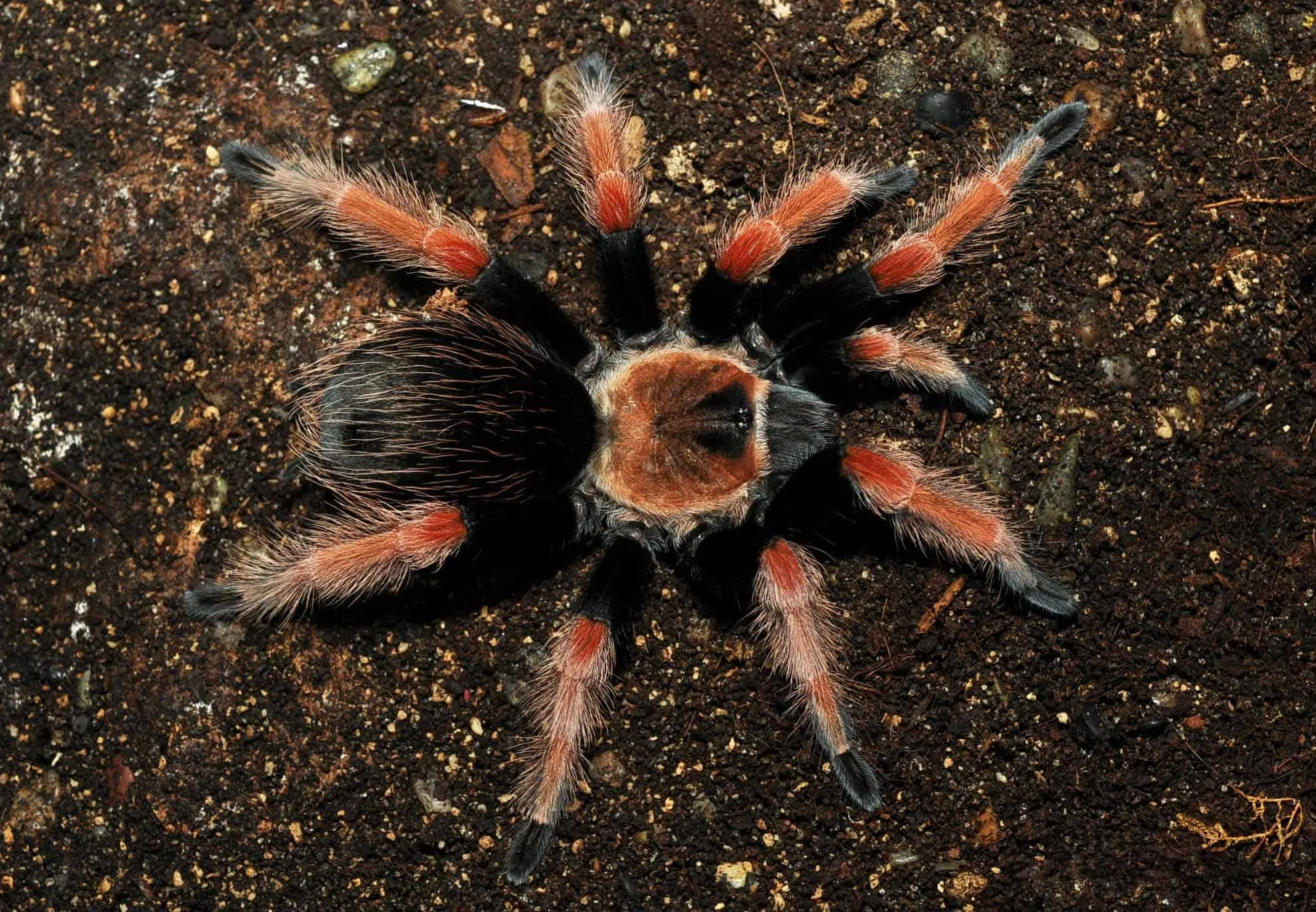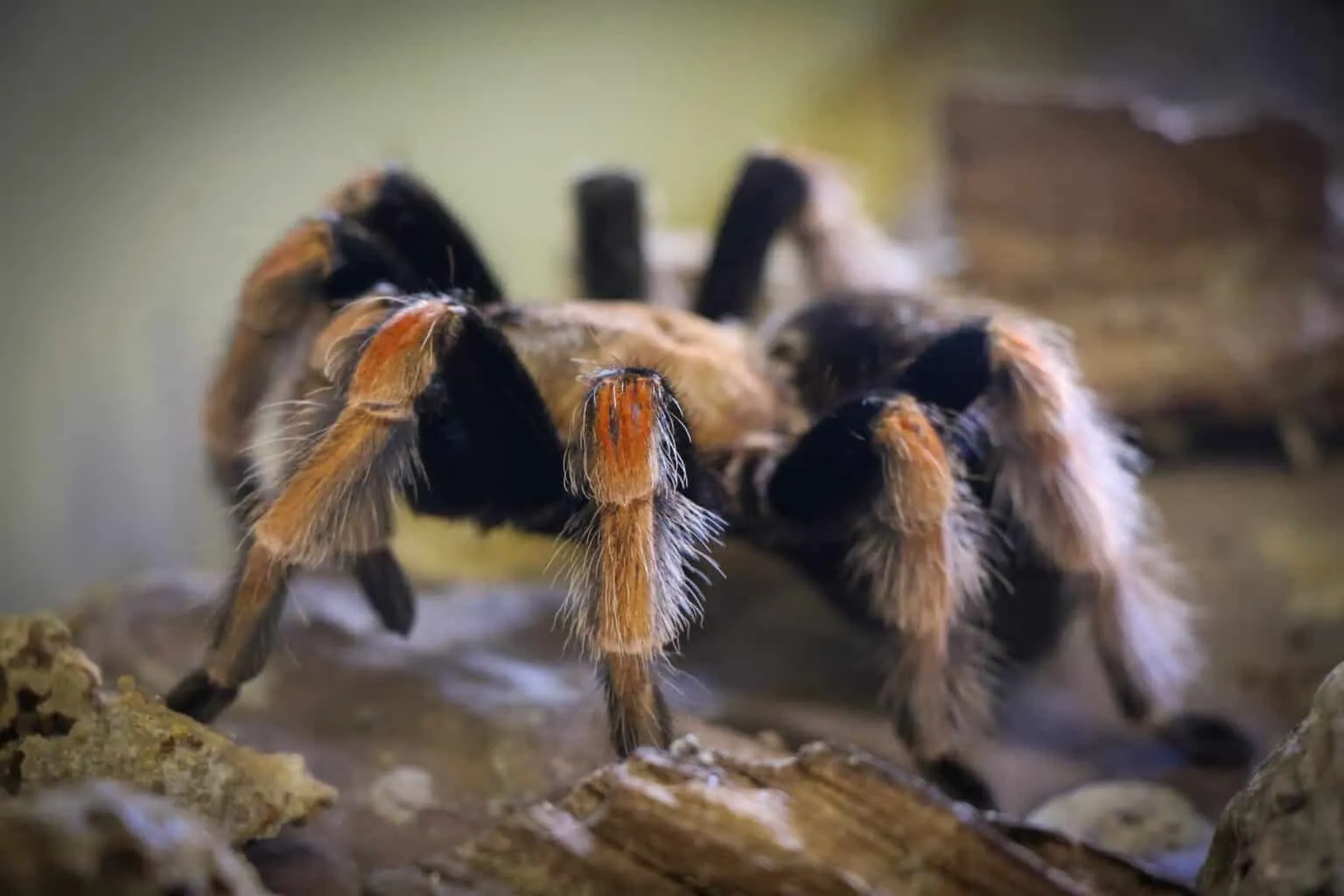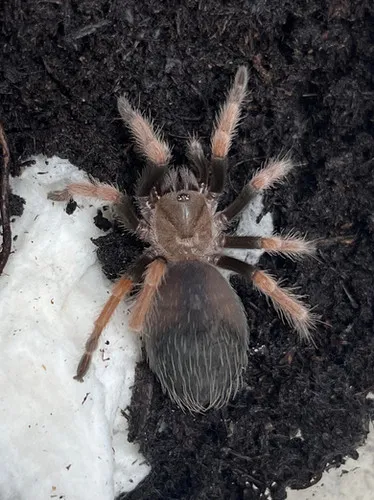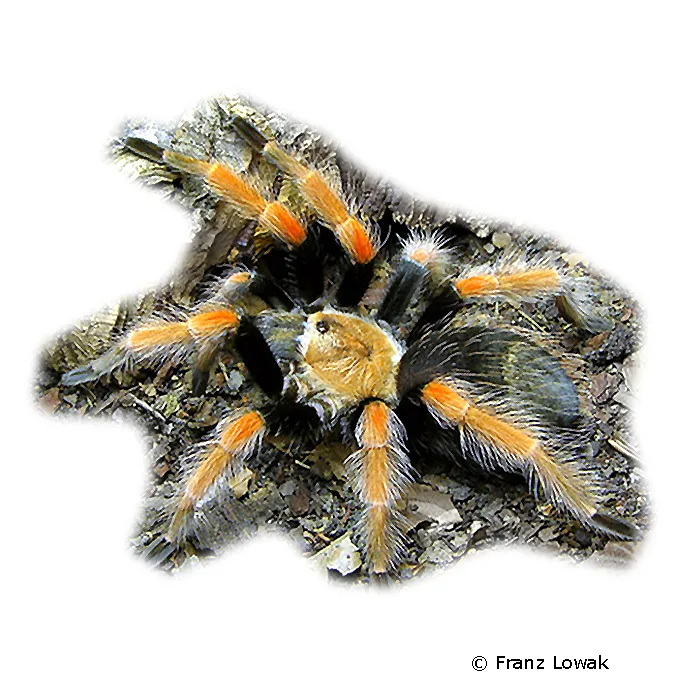Pygmy Fireleg Tarantula: Top 5 Amazing Facts!
The Pygmy Fireleg Tarantula (Hapalopus sp.) is a captivating creature, often overlooked in the vast world of tarantulas. These smaller arachnids, native to South America, offer a unique blend of beauty and intrigue, making them a fascinating subject for both enthusiasts and newcomers to the hobby. This article delves into five amazing facts about the Pygmy Fireleg Tarantula, highlighting their distinctive features, behaviors, and the intriguing aspects that set them apart from other tarantula species. Discover the allure of these miniature marvels and learn what makes them so captivating.
Appearance and Identification
One of the first things that capture the attention of any observer is the Pygmy Fireleg Tarantula’s striking appearance. These tarantulas are relatively small, typically ranging from 1 to 2 inches in leg span. Their bodies are covered in fine hairs, which contribute to their velvet-like texture. Coloration varies, but most individuals display a dark carapace and abdomen. The true highlight of their appearance lies in their legs, which feature vibrant red or orange markings that give them their common name, “Fireleg”. This vivid coloration provides a stunning contrast against their darker bodies, making them visually appealing. This species is often confused with other similar species, such as Hapalopus formosus, but careful observation of leg markings and overall size is crucial for accurate identification.
Distinctive Leg Markings

The most defining feature of the Pygmy Fireleg Tarantula is, undoubtedly, their leg markings. These markings, varying from bright red to vibrant orange, are present on all four pairs of legs. The intensity of the color can vary based on the individual tarantula and its overall health. The patterns typically involve bands or streaks of color that stand out dramatically against the darker leg segments. This unique feature provides a clear visual distinction between these tarantulas and other similar species. The eye-catching nature of these fire-colored legs adds significantly to their popularity among tarantula enthusiasts, making them a sought-after species for collections.
Size and Physical Features
Beyond the striking leg markings, the Pygmy Fireleg Tarantula’s size is another distinguishing feature. As mentioned, these tarantulas are small, with a leg span typically between 1 to 2 inches. This diminutive size makes them one of the smallest tarantula species kept as pets, adding to their charm. Their bodies are compact, and their exoskeletons are relatively delicate compared to larger tarantula species. This size makes them suitable for smaller terrariums, requiring less space and resources for their care. The compact size makes them easy to handle, provided proper care guidelines are followed. Their size and appearance make them an excellent choice for those starting with tarantula care.
Habitat and Native Range
The Pygmy Fireleg Tarantula originates from the tropical regions of South America. Specifically, they are found in countries such as Colombia, Venezuela, and Trinidad and Tobago. Their natural habitat is typically characterized by humid environments with dense vegetation. These tarantulas are terrestrial and often found in leaf litter or shallow burrows in the forest floor. Understanding their natural habitat is crucial for replicating the ideal conditions in captivity, which helps ensure the tarantula’s health and well-being. Their native environment plays a critical role in shaping their behavior, appearance, and overall survival strategies. Preserving their native habitats is also essential for their continued survival in the wild.
Where Pygmy Fireleg Tarantulas Live

In the wild, Pygmy Fireleg Tarantulas live in terrestrial habitats. They are often found in areas with dense undergrowth, such as leaf litter and the forest floor. These tarantulas are adept at creating shallow burrows or utilizing natural shelters. They prefer environments that provide both moisture and cover from direct sunlight. These environments offer a safe haven from predators and a stable climate. This habitat preference highlights the importance of providing a similar setup in captivity, which ensures their well-being and facilitates natural behaviors. The setup should mimic the layers of the rainforest floor for optimal comfort.
Climate and Environmental Preferences
Pygmy Fireleg Tarantulas thrive in warm, humid environments. In their native habitats, temperatures typically range from 75°F to 85°F (24°C to 29°C). Humidity levels are high, often between 70% and 80%. In captivity, these conditions must be maintained to ensure their health. This can be achieved through the use of a terrarium with a secure lid, proper substrate, and a heat source. Regular misting is also essential to maintain the required humidity levels. Monitoring the temperature and humidity is critical for their well-being. Fluctuations can lead to health issues, such as dehydration or respiratory problems. Regular checks ensure the environment remains stable.
Diet and Feeding Habits
As carnivores, Pygmy Fireleg Tarantulas primarily feed on insects in their natural environment. They are opportunistic predators, meaning they will consume any prey they can capture. In captivity, their diet is typically straightforward, consisting mainly of feeder insects. Providing a varied and nutritious diet is essential for their growth and overall health. The type of insect and the frequency of feeding can affect their well-being. They play a significant role in the ecosystems they inhabit, controlling insect populations and contributing to the balance of their natural environment. Careful attention to their feeding habits is key to their successful care.
What Pygmy Fireleg Tarantulas Eat

The diet of a Pygmy Fireleg Tarantula in the wild typically consists of a variety of insects. Common prey includes crickets, roaches, small beetles, and other invertebrates they can overpower. In captivity, the most common food items are commercially available feeder insects, such as crickets, mealworms, and dubia roaches. The key is to vary the diet to ensure a balanced intake of nutrients. Offering a variety of prey items also helps to keep the tarantula stimulated and prevents nutritional deficiencies. Proper care involves selecting high-quality insects, which guarantees a healthy diet for the tarantula.
Feeding Frequency and Food Choices
The feeding frequency for Pygmy Fireleg Tarantulas depends on their age and size. Spiderlings and juveniles should be fed more frequently, typically every other day. Adult tarantulas can be fed less often, usually once or twice a week. It’s crucial to observe the tarantula’s feeding behavior and adjust the schedule accordingly. If the tarantula is not eating, it could be due to molting or environmental stress. Always remove uneaten food to prevent the build-up of mold or mites. Using appropriately sized prey is important to prevent the tarantula from being overwhelmed or injured. Offering a varied selection ensures that the tarantula receives essential nutrients.
Behavior and Temperament
Pygmy Fireleg Tarantulas are known for their generally docile temperament, which makes them a great choice for beginners. They tend to be less defensive compared to some other tarantula species, and rarely exhibit aggressive behaviors. However, like all tarantulas, they can exhibit defensive behaviors if they feel threatened. Understanding their behaviors helps you handle and care for them correctly. Observing their behavior can also indicate the tarantula’s overall health and well-being. Providing a suitable habitat and avoiding unnecessary disturbances is crucial for promoting a stress-free environment.
Typical Behaviors of Pygmy Fireleg Tarantulas

Pygmy Fireleg Tarantulas have a range of behaviors that are fascinating to observe. They are typically more active during the evening and night. They often explore their enclosures and may rearrange their substrate. They may also be seen constructing small webs and hiding in their shelters. They may retreat into their burrows or under cover if they feel threatened. Understanding these behaviors provides insight into their needs and preferences. When they are molting, you might observe them hiding more frequently. Watching their movements provides a window into their life.
Defensive Mechanisms
While generally docile, Pygmy Fireleg Tarantulas have defensive mechanisms they will use if they feel threatened. They might flick urticating hairs, which are small, barbed hairs found on their abdomen, towards a perceived threat. These hairs can cause skin irritation if they come into contact with human skin. They may also assume a defensive posture, raising their front legs and displaying their fangs. Avoiding sudden movements and unnecessary handling will minimize the risk of triggering these defensive behaviors. Understanding their defensive mechanisms helps prevent accidental harm and keeps the tarantula safe.
Lifespan and Conservation
The lifespan of a Pygmy Fireleg Tarantula is another interesting aspect. Female tarantulas typically live longer than males. Understanding the lifespan and conservation status helps in planning for their long-term care. They do not require specific conservation efforts at this time. However, awareness of their natural habitats is important. Their lifespan, though shorter than some other tarantula species, makes them a commitment for pet owners. Proper care and habitat conditions play a key role in their overall lifespan. Being aware of their natural history also helps to create a more fulfilling ownership experience.
How Long Pygmy Fireleg Tarantulas Live

The lifespan of a Pygmy Fireleg Tarantula varies depending on the sex of the tarantula. Female tarantulas can live for several years, typically from 5 to 7 years in captivity. Male tarantulas, on the other hand, have a shorter lifespan, usually living for 1 to 2 years after reaching maturity. Proper care and maintaining a stable environment can contribute to their longevity. Factors such as diet, temperature, and humidity levels influence their lifespan. Knowing how long your tarantula may live can help you prepare for its care needs over time. The differences between males and females are important when considering the pet’s lifetime.
Conservation Status and Threats
Currently, Pygmy Fireleg Tarantulas are not considered a species of conservation concern. They are relatively common in their native habitats. Threats to their populations include habitat loss, caused by deforestation and human development. Climate change also poses potential risks to their natural environments. The pet trade, if not regulated, can also impact their populations. Responsible pet ownership and supporting conservation efforts are key to ensuring the survival of this species. Promoting awareness and education about their conservation needs contributes to the long-term health of their populations. Preserving their habitats also benefits the ecosystem.
